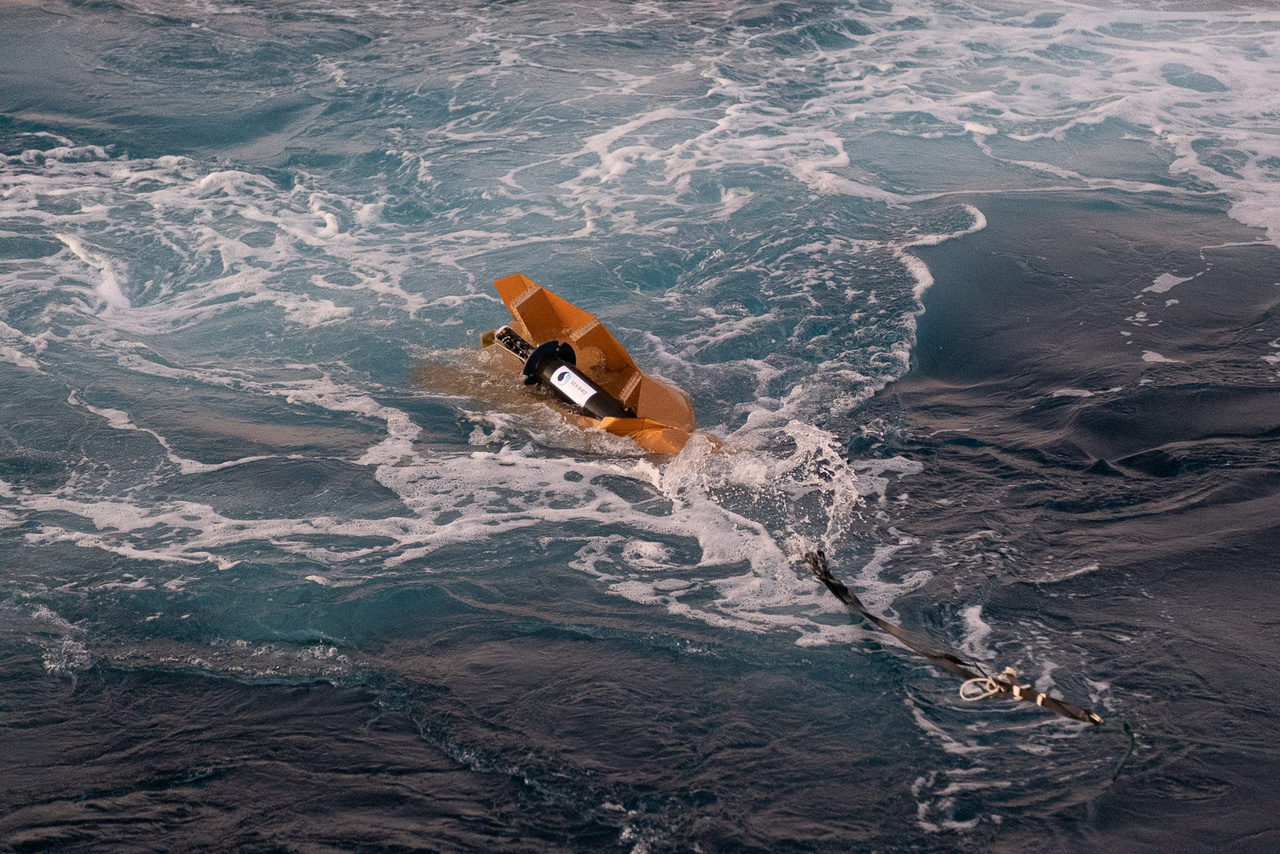The Australian branch of the global Biogeochemical Argo effort have deployed their first two floats into the EAC from the RV Investigator.
The floats were deployed into the East Australian Current (EAC) on Oct 4, 2019, from the Marine National Facility R/V Investigator, and they have already reported from their first cycles. They are being carried southwards in the EAC as expected, and all looks well with respect to data quality from the sensors. Data from the floats (WMO IDs 5905441 and 5905442) can be accessed from the global data centres.
The floats were prepared and provided by the University of Washington and are Teledyne-Webb APEX APF-9 models, equipped with unpumped Aanderaa oxygen optodes, ISUS nitrate spectrometers, SBE pH field effect transistors, and Wetlabs FlBb combined chlorophyll fluorometers and particulate 700nm optical backscatter sensors, thus providing 5 of the 6 BGC variables (omitting solar radiation).
Sensor calibration samples were collected both at the time of deployment and from the preceding IN2019_V05 EAC moored array voyage, with the support of MNF and voyage science parties. Calibration analyses include onboard salinity, oxygen, and nitrate by the Marine National Facility and return of samples to CSIRO for paired total CO2 and alkalinity analyses (to calibrate pH) and paired pigment and particulate organic carbon analyses (to calibrate the combined FlBb sensor).
